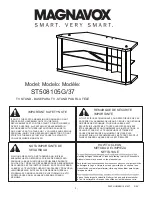
4 Installing the Air System
32
4.2
Running and Securing the Air Line
The path taken by the air line from your air source (i.e., compressor) to
your
Air Locker
is unique to your vehicle and the position of your air
source. Plan ahead carefully when running the air line and always
follow these guidelines:
Account for axle travel when running the line from the axle to a
fixed point on the vehicle. Leave enough slack in the air line to
allow for maximum suspension travel in both directions.
(Not necessary on IFS installations)
Avoid leaving large lengths of air line hanging underneath the
vehicle where they may get tangled on rocks, sticks, etc.
HINT : Cable tying the air line to one of your flexible brake
lines will account for axle travel and should help keep
your line from getting snagged.
Run the air line all the way from the compressor to the differential
before trimming either end of the line to length. This will save
complications that may arise if the air line has to be removed.
Make sure the line does not contact sharp edges or abrasive
surfaces that may damage the air line over time.
Do not run the air line around tight bends which may kink the air
line and restrict or block the air flow.
Keep the air line well away from your vehicle’s exhaust
components. Air lines will melt if subjected to extreme heat.
Do not run more air line than necessary. Excess line volume
created when coiling the left over hose, using unusually large
diameter hose, etc., will increase drain on the compressor tank
resulting in the compressor running more often than needed.
Support the air line by tying it back with cable ties wherever
possible.
At the solenoid end of the air line, always trim the line to length with
a sharp knife to avoid distorting the tube where it plugs into the
push-in fitting.
NOTE :
To remove the air line from the push-in fitting; while
holding the flange of the fitting out, push the air line
into the fitting as far as possible, then press the flange
inward, then pull the air line free of the fitting.













































